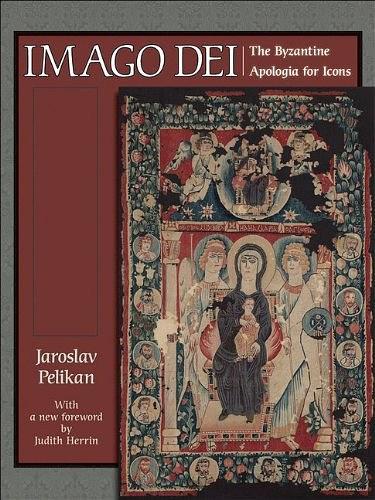Imago Dei:The Byzantine Apologia for Icons
- 作者
- 出版社 Princeton University Press
- 出版时间 2011年9月
- ISBN 9780691141251
内容简介
In726theByzantineemperor,LeoIII,issuedanedictthatallreligiousimagesintheempireweretobedestroyed,adirectivethatwaslaterendorsedbyasynodoftheChurchin753underhisson,ConstantineV.IfthepolicyofIconoclasmhadsucceeded,theentirehistoryofChristianart-andoftheChristianchurch,atleastintheEast-wouldhavebeenaltered.Iconoclasmwasdefeated-byByzantinepolitics,bypopularrevolts,bymonasticpiety,and,mostfundamentallyofall,bytheology,justasithadbeentheologythattheopponentsofimageshadusedtojustifytheiractions.Analyzinganintriguingchapterinthehistoryofideas,therenownedscholarJaroslavPelikanshowshowafaiththatbeganbyattackingtheworshipofimagesendedfirstinpermittingandthenincommandingit.PelikanchartsthetheologicaldefenseoficonsduringtheIconoclasticcontroversiesoftheeighthandninthcenturies,whosehighpointcameinA.D.787,whentheSecondCouncilofNicaearestoredthecultofimagesinthechurch.HedemonstrateshowthedogmasoftheTrinityandtheIncarnationeventuallyprovidedthebasicrationaleforimages:becausetheinvisibleGodhadbecomehumanandthereforepersonallyvisibleinJesusChrist,itbecamepermissibletomakeimagesofthatImage.AndbecausenotonlythehumannatureofChrist,butthatofhisMotherhadbeentransformedbytheIncarnation,she,too,couldbe"iconized",togetherwithalltheothersaintsandangels.Theiconographic"text"ofthebookisprovidedbyoneoftheveryfewsurvivingiconsfromtheperiodbeforeIconoclasm,theEgyptiantapestryIconoftheVirginnowintheClevelandMuseumofArt.Othericonsservetoillustratethetheologicalargument,justasthetheologicalargumentservestoexplaintheicons.Inanewforeword,JudithHerrindiscussestheenduringimportanceofthebook,providesabriefbiographyofPelikan,anddiscusseshowlaterscholarshavebuiltonhiswork.
— END —
